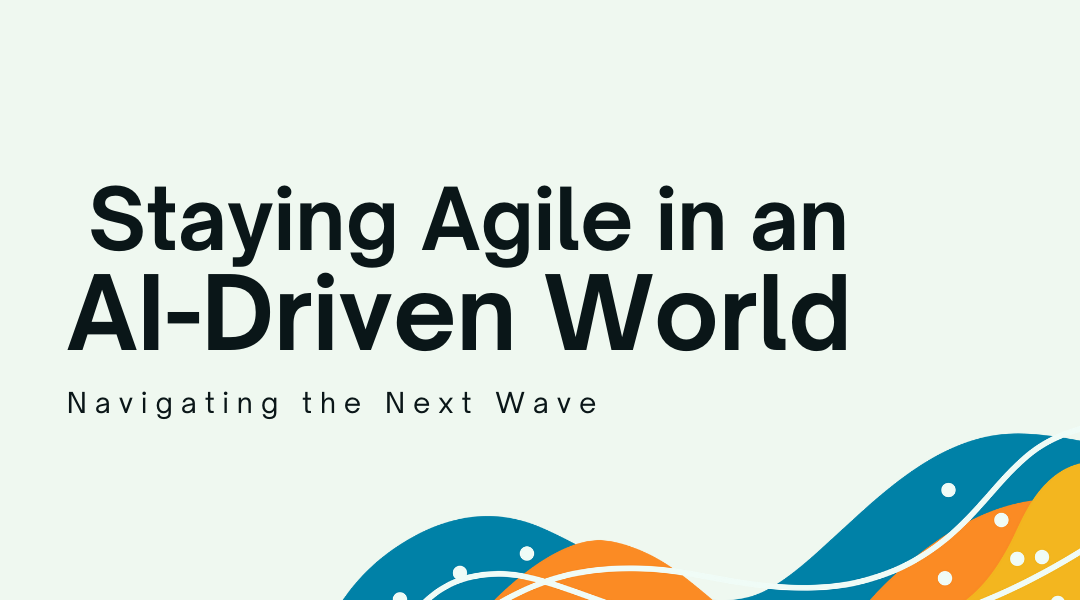Trying to predict the exact future of artificial intelligence is a fool’s errand. The field is moving too fast. What we can do, however, is observe the trajectories taking shape and build a mindset that turns relentless change from a threat into a powerful advantage. The goal isn’t to future-proof your business—an impossible task—but to future-ready it, making you agile, adaptable, and always learning.
The Shifts on the Horizon: Beyond Simple Tools
The real transformation will occur as AI evolves from a passive tool you command to an active partner you trust with objectives.
1. From Tools to Teammates: The Age of Autonomous Agents
We’re moving beyond asking a chatbot to draft an email. The next phase is the rise of AI “agents”—sophisticated systems you can assign a broad goal. They won’t just execute a single task; they’ll plan and perform a multi-step workflow across various platforms to achieve an outcome.
- What it looks like: Instead of manually using different apps to find a new hire, you’ll tell your HR agent: “Find me three qualified candidates for the content manager role.” The agent will then scan LinkedIn profiles, cross-reference portfolios, draft and send outreach emails, schedule interviews on your calendar, and provide you with a shortlist and summary. Your role shifts from doing to directing and deciding.
2. The End of Mass Marketing: Hyper-Personalized Experiences
Generic email blasts and one-size-fits-all web pages will soon feel archaic. AI is enabling a level of personalization previously reserved for Fortune 500 companies with massive data science teams. This will become the baseline expectation for consumers.
- What it looks like: A visitor spends three minutes watching a demo video on your software site. Instantly, your AI analyzes their behavior and firmographic data. Before they even leave, they receive a personalized one-click offer to start a free trial pre-configured for their company’s size and industry. The experience isn’t just tailored; it’s anticipatory.
3. The Blending of Realities: Multi-Modal Becomes Standard
The walls between text, image, audio, and video are crumbling. Future AI models will natively understand and create across all these formats simultaneously, unlocking profoundly creative and efficient workflows.
- What it looks like: You record a quick voice memo describing a new product feature. The AI instantly turns it into a blog post, generates a series of social media visuals with captions, creates a short explainer video with a synthetic voiceover, and even drafts a script for your YouTube channel. One idea, expressed in your natural language, becomes a multi-format content ecosystem.
Your Strategic Advantage: Cultivating a Learning Mindset
In this environment, mastering any single tool is a temporary victory. The only permanent skill is the ability to learn, unlearn, and relearn.
- Carve Out Curiosity Time: Block out “AI Exploration” hours on your calendar each week. This isn’t a distraction; it’s R&D for your business. Use this time to tinker with a new tool, read a technical paper, or simply try to break something in a sandbox environment.
- Curate, Don’t Consume: The noise around AI is deafening. Find a few trusted, critical thinkers—not hype artists—who cut through the buzz. Subscribe to their newsletters, listen to their podcasts, and follow their practical experiments.
- Embrace the “Permanent Beta” State: Let go of the idea of a “finished” way of working. Your processes, tools, and strategies should always be in a state of gentle evolution. Be ruthlessly pragmatic: if a new method works better, abandon the old one without sentimentality. Your flexibility is your new core competency.
Conclusion: Your Immediate Action Plan
The journey into an AI-augmented business isn’t about a single, massive overhaul. It’s a series of small, smart bets. Overwhelm is the enemy of progress. So start small, but start now.
- Pick One Pain Point: Identify the single biggest time-sink or frustration in your current workflow. Is it drafting content? Qualifying leads? Scheduling? Onboarding clients?
- Find One Tool: Based on that pain point, select one AI tool from the categories we’ve discussed. Don’t boil the ocean. Your mission is to solve that one problem.
- Run a One-Week Experiment: Commit to using that tool and only that tool for that specific task for one week. Document what works, what doesn’t, and the time you save.
- Assess and Adapt: At the end of the week, ask yourself: Did this make my life easier or better? Did it save time or create a better outcome? If the answer is yes, integrate it permanently. If not, discard it and run a new experiment.
The businesses that will thrive aren’t those with the biggest budgets, but those with the most curiosity and the greatest agility. Stop waiting for a perfect map of the future. Start building your compass instead. Your next competitive edge is just one experiment away.
